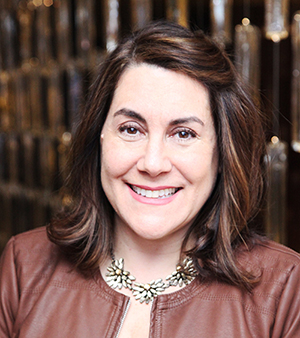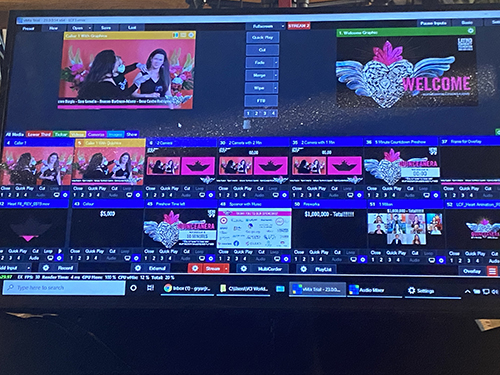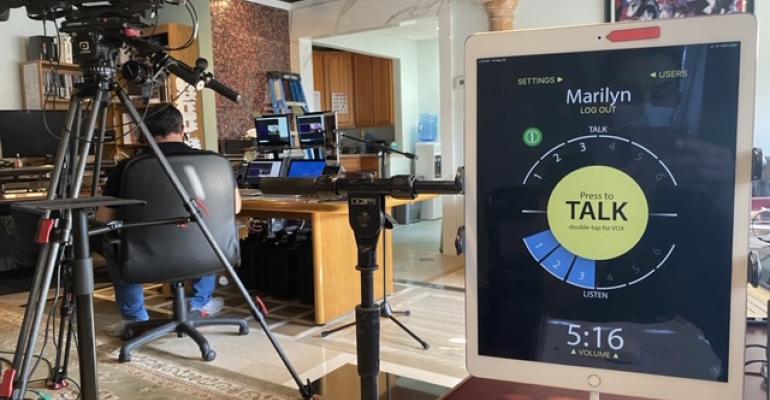
Marilyn Moss, president of New York-based MM Event Group, shares how her team moved its in-person fundraiser to an online event—with terrific results.
Special Events Magazine: What was the date of your “new format” gala?
Marilyn Moss: The Latino Community Foundation (LCF) Coming of Age Virtual Gala was hosted on May 21. This was the original date of the in-person gala that was to be held at the Fairmont San Francisco.
SE: When did you decide you just could not go forward with a classic “in person” gala?
MM: We had to decide to cancel our in-person event early on in March, even before everything officially shut down. As the uncertainty of our spring and summer event seasons grew alongside the spread of the pandemic, we knew we had to be proactive with a decision. Events were cancelling or postponing, but for nonprofits, fundraising galas are an essential part of annual budgets and bring in essential revenue. LCF is an organization whose constituents were severely affected by the economic and social effects that resulted from the pandemic, so when we had our planning call, we affirmed that we were confident that their event would successfully transition online. As an event team, we had not explored the virtual event realm yet, but we are not the group to turn away from a challenge.
When we made the decision to go virtual, it felt like the brave choice. Now that we know what is possible, the only choice is moving forward and making virtual events even more successful.
SE: What format did you use for your virtual gala?
MM: We had a short timeline to transition from in-person to virtual, but while we made those changes, we did our research! By watching every live event and webinar, we quickly realized the weak point in virtual events is the Internet connection. Storytelling is fundamental to virtual events, which makes the ability to successfully hear and see your speaker critical. To be proactive, we decided that our event would be 75 percent pre-recorded content and 25 percent live-streamed. With additional technical assistance from our production partners at Rooftop2, we transitioned from our recorded video and celebrity content to the LCF live-stream in San Francisco from our studio in New York City.
SE: What technology did you turn to to make the virtual gala work?
MM: The LCF event traditionally has a paddle-raise for their live ask, feeding off the energy of the room for donations. For the new format, we reached out to Give Lively to create a text to pledge moment. For streaming, we hosted the event on YouTube and Facebook live. We utilized the chat features of these streaming platforms to keep our audience connected and engaged. In partnership with our production company, we rehearsed and tested the live-stream components and sent out back-up Internet kits to the live locations. We ended up not needing them, but it was a necessary precaution to avoid Internet connectivity issues.
SE: How many guests did you have?
MM: During the event, we had about 7,000 people viewing live--a significantly larger number of attendees than can fit in an event venue! Since then, with our video accessible on the LCF website and on YouTube, the event has received over 10,000 views.
SE: What did your guests experience?
MM: The attention spans of your attendees are minimal in virtual events--your run of show must be well thought out and take advantage of every minute. We recommend sticking to 60 to 75 minutes maximum for your show time.
During the LCF gala, our guests experienced a variety of forms of entertainment including musical interludes and spoken word poetry, celebrity-featured videos, pre-recorded LCF storytelling content, and breakaways to the live call to action with donor names in ticker tape along the bottom of the screen. While we maintained our usual sponsors, we offered free tickets to anyone who wanted to view the live-stream, increasing the accessibility of the event.
Enhanced tickets were also available, and we collaborated with a local winery and chocolatier to ship out hospitality items in advance to those who came in at the enhanced levels! This also added to the guests' interaction when everyone raised their glasses to kick off the event.

SE: What worked especially well?
MM: When conceptualizing how we would transition our in-person event to a virtual event, the keywords were strategy and timing.
The event was successful because the run of show was planned out to the second. By beginning planning with acknowledging our concerns with technical glitches, we ensured that there was a large roster of pre-recorded material that was essential to ensuring things flowed technically and remained within our time window.
While planning the timing, we considered the outside perspective and asked ourselves: "What would inspire us to continue watching?" We created the scripts and materials to have a balance of entertainment and impactful storytelling. Our transitions between entertainment, storytelling moments, and the live asks made each moment feel fresh, so viewers were anticipating what came next.
To end the night, we moved the guests to a DJ-hosted after-party, which included a dance competition. Viewers partied the night away virtually--everyone really enjoyed seeing each other, and the party went on for hours.
SE: What you wished you could do that you could not?
MM: Honestly, we miss togetherness. In the virtual world, the technology is doing its best to create a sense of closeness, but that will never match the true energy of being in an event space with your peers and colleagues.
We hosted the LCF event very early on during this new time, and since then we have seen immense growth in the technological capabilities and offerings. Our production/technology partners have developed a program called Virtual Tables that allows attendees to watch the live-stream alongside those they would have been sitting with in the ballroom. It creates the unique atmosphere of a viewing party with friends while still being virtual.
SE: What were the financial results?
MM: This is my favorite part of it all--LCF’s virtual event raised more than their in-person gala had ever achieved! I am proud to applaud all our donors and sponsors efforts for raising over one million dollars to support LCF’s amazing work. Despite all the hardship in the world right now, there is an enormous spirit of generosity and a rallying of support. While we remain in isolation, communities are coming together and ensuring those who need help are provided for.
When discussing results, it’s important to note that even weeks after the completion of this virtual event, the video is posted online, and LCF has continued to receive a slow stream of donations come in from later viewers. The longevity of virtual events is an unexpected benefit and an opportunity to introduce new donors to who an organization is.
SE: Were there any surprise costs? Surprise savings?
MM: In traditional events, your budget is venue-based and tangible--food and beverage minimum, decor, furniture rental, signage and printed materials, and the on-site entertainment. That is by no means a full list. As event planners, we are aware that the smallest details have a price tag, but on the night of, we stood proudly in our event space and saw the fruits of labor.
What we need to remember now, is the virtual world is our new venue. A virtual event has enormous savings, but it is not free. The AV expenses are most of your budgetary expenses. We cannot emphasize this enough: Investing in your event now means investing in the technology and the experts who understand it.
SE: How did you handle traditional gala elements such as decor, food and entertainment?
MM: LCF rallies behind their community. When planning our in-person event, we focus on supporting local Latino-owned organizations, and as we transitioned to virtual, it was essential that we sustain that key element. While decor, food and entertainment were not centralized to the beautification of a venue, all the elements were utilized.
For decor, we continued our relationship with our San Francisco-based florist, who provided a backdrop for our studio set. The cost of food decreased due to not needing to meet a food and beverage minimum, but we wanted to increase sponsor and donor engagement by sending home gift packages featuring chocolate and wine.
Entertainment becomes one of the most essential aspects of a virtual event. With a shorter time span overall, it is suggested virtual events not surpass 75 minutes. Entertainment creates effective transitions that keep your audience engaged. The LCF run of show was segmented in a variety of featurettes, moments of entertainment interwoven with calls to action. Planning is essential when your attendees can log out at any moment; do your best to use entertainment and storytelling to keep viewers smiling and giving!
SE: If need be, would you produce next year’s gala in the same way? Why or why not?
MM: While the LCF gala is scheduled to be held in person at the Fairmont San Francisco on May 14, 2021, we will most likely keep some of the components of the virtual gala, such as streaming to a wider audience, allowing us to reach all the donors that are not able to attend, and hopefully surpass an even higher donation goal next year!





